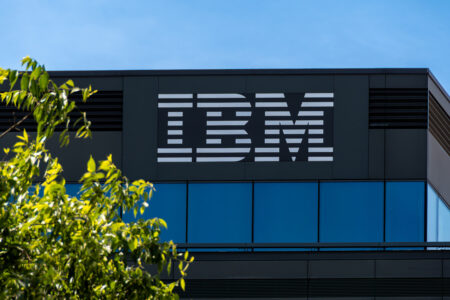Ransomware attacks continue to increase in the workplace and pose significant threats against businesses small or large. Ransom demands are also rising exponentially each year. Small businesses are especially vulnerable to a ransomware attack due to weaker cybersecurity defenses compared to a larger enterprise. Paying a ransomware fee is also a major risk, as there is no guarantee you can regain access to your data.
New Ransomware Tactics
One of the main reasons why ransomware continues to expand is that cybercriminals are using new tactics. Instead of only holding the data hostage, these cybercriminals are also threatening to expose this information publicly, which can lead to GDPR fines or a loss of customer trust. Ransomware attacks are also becoming more widespread due to the increasing number of “ransomware-as-a-service” options that are available on the dark web. RaaS allows cybercriminals to conduct these attacks without needing technical skills, as they only have to pay a royalty for the owner of this service.
Many cybercriminals are also learning to take advantage of the pandemic due to the growing number of remote workers. Employees often fall victim to a ransomware attack by accidentally downloading an email attachment from a cybercriminal posing as a manager within their organization. These attachments are often a form of malware that can lock out a computer and spread throughout the network causing widespread damage.
Covid-19 is also forcing many companies to balance various cybersecurity concerns due to the increasing number of employees working from home. A recent Cyber Threats Report from Netwrix found that 85% of CISOs reduce cybersecurity protection to allow employees to work remotely. These IT security vulnerabilities are often easily exploited by cybercriminals, such as weaknesses within a VPN appliance or outdated software.
Ransomware Protection- Cyber Security Analysts on Alert
While no software can guarantee ransomware protection, it’s still important for businesses to pay attention to the fundamentals of cybersecurity in the workplace. Developing a cybersecurity framework can happen in a variety of ways, such as using network segmentation, anti-malware technologies, endpoint security, employee training, and patch management. The key point is to consistently focus on cybersecurity while also staying up to date with the latest threats. For example, creating email spam filters is only the beginning, as you will need to fine-tune these filters on an ongoing basis. Conducting basic cybersecurity awareness training is also not enough, as employees need to understand the scope of damage that can happen due to one simple mistake. It’s also important for an organization to establish a secure connection for remote workers, as ransomware attackers often focus on taking advantage of employees working at home. Ultimately, combining all of these IT processes and technology can help a business reduce the risk of ransomware attacks.
Always Stay Vigilant
The common wisdom from any cybersecurity analyst is that a secure enterprise remains a myth. However, the primary goal of any program is to ensure your business is more secure today compared to yesterday. The risk of these ransomware attacks has never been greater due to these ever-increasing costs. Organizations need to create a strong cybersecurity framework to quickly identify an attack during the early stages while also having a detailed plan to reduce these damages.
The introduction of the General Data Protection Regulation (GDPR) has also caused cybercriminals to focus on gaining access to personal data. Businesses need to focus on minimizing the attack surface by reducing access to sensitive information while also revoking excessive privileges for an added level of security. Companies need to understand what type of information it stores and the location of this data to reduce overexposure. Taking these additional steps can provide ransomware protection by limiting the amount of data that’s available if a cybercriminal breaks into the computer system. These malicious attackers will only gain access to a small amount of data instead of the entire network.
One of the crucial aspects that allows a business to react to security incidents quickly is through auditing. A ransomware attempt is always accompanied by various anomalies on the network. These may include failed login attempts or a larger number of file modifications. Other signs of a ransomware attempt with remote workers are VPN login attempts from unusual locations or access attempts outside of normal working hours. These combinations are often a significant warning, as it’s essential for a company to flag these anomalies to the cybersecurity team as soon as possible.
Creating frequent comprehensive backups is essential for ransomware protection, as you may need to wipe your entire system and reinstall everything from scratch. Using a secondary backup copy that’s offline is also beneficial, as you can quickly recover from even the most severe ransomware attacks if this data is disconnected from your network or IT system.
While creating data backups is important, ransomware attacks that focus on blackmailing can still cause significant damage to your business. Companies need to work on creating a remediation plan in case that sensitive information is exposed to the public. This detailed plan needs to include notifying the authorities, investigating the root cause, and reaching out to the affected users. Quickly communicating with all of the parties involved and providing clear answers can help reduce the fine from the Information Commissioner’s Office (ICO) due to this data breach.
Businesses can expect that ransomware attacks will only continue to grow more complex. However, data breaches often happen due to basic gaps in a company’s cybersecurity framework. While having an up to date toolset is essential in ransomware protection, businesses will still need to find ways to address cybersecurity concerns. Today’s IT environment will only continue to become more challenging, as businesses will need to develop solutions to respond quicker and more thoroughly against these evolving threats.
Related DAC Content
Adversarial Perspective & Azure Security
Hybrid Cloud Environments, AWS, and IBM Cloud Security
Malware and Ransomware Security Risks with Cloud Migration
Unleash Row Level Security Patterns in Power BI






